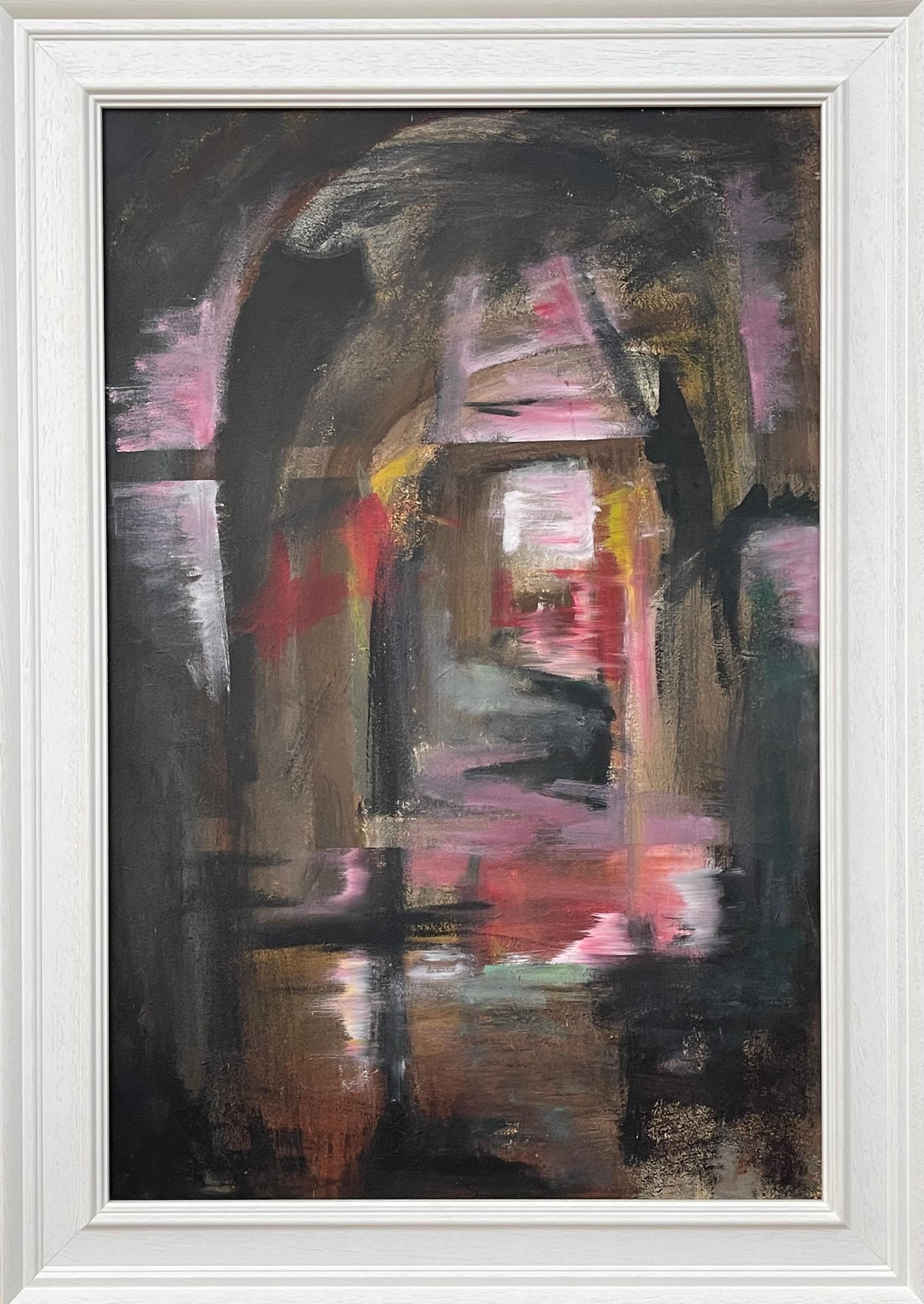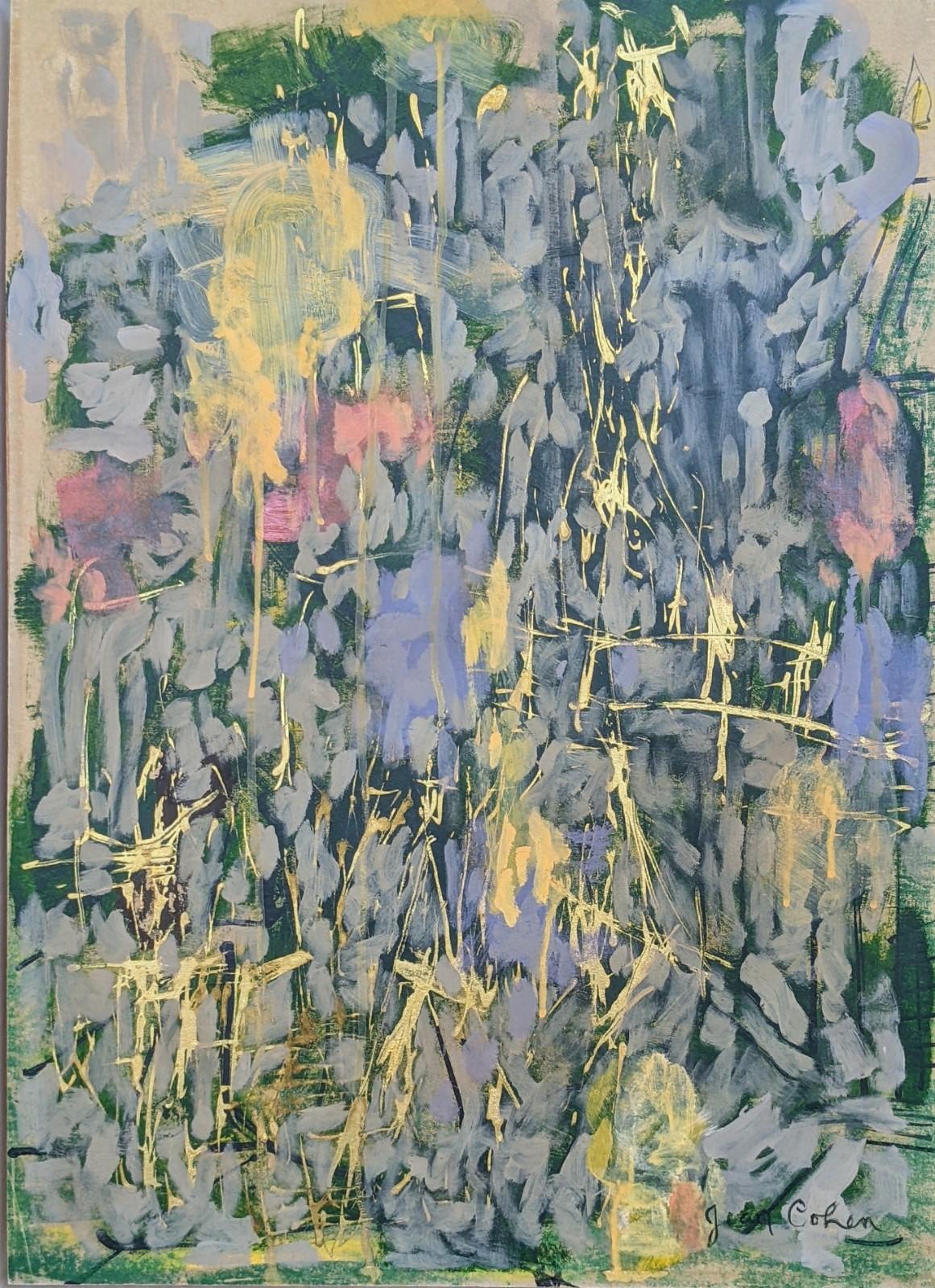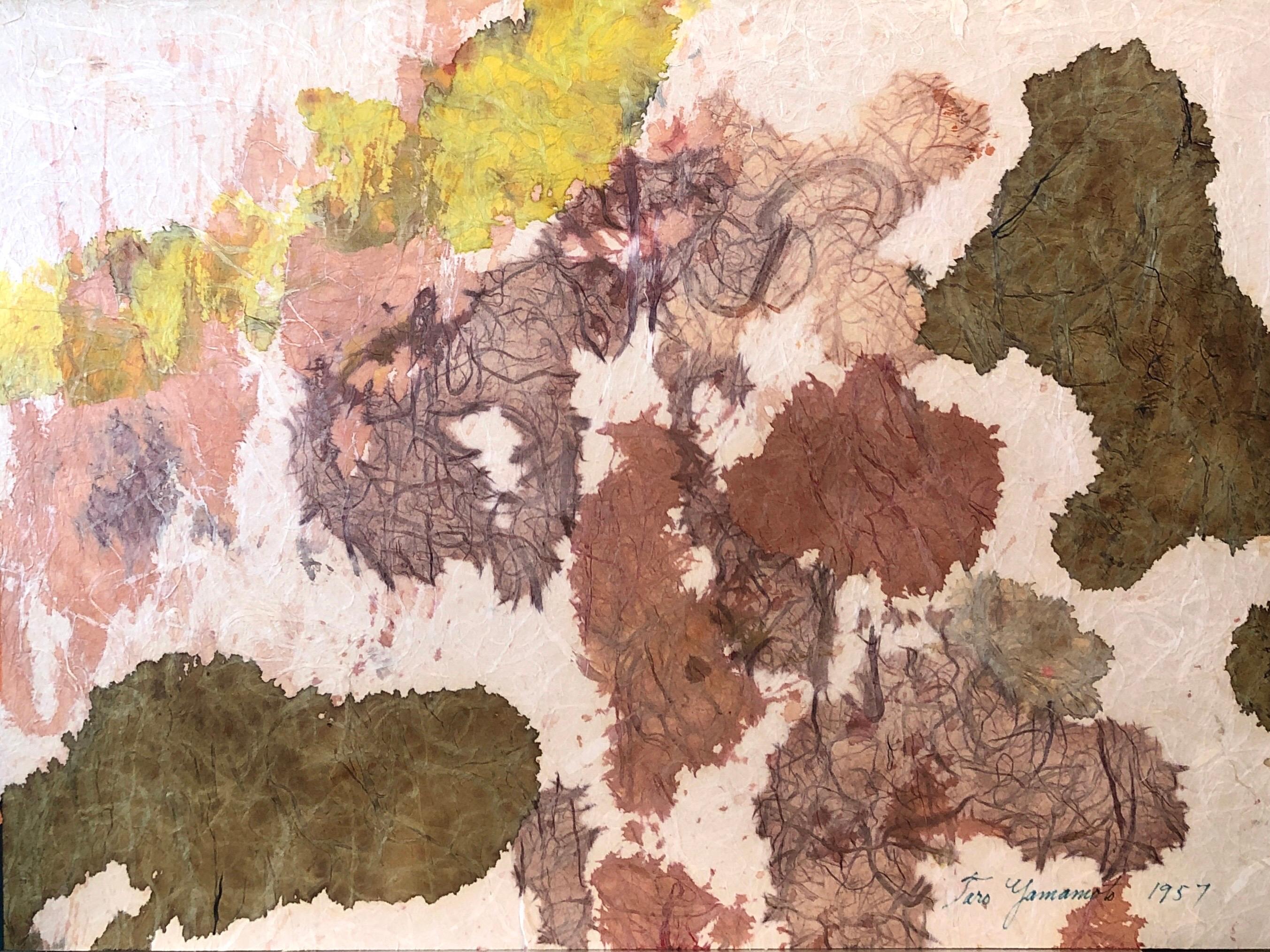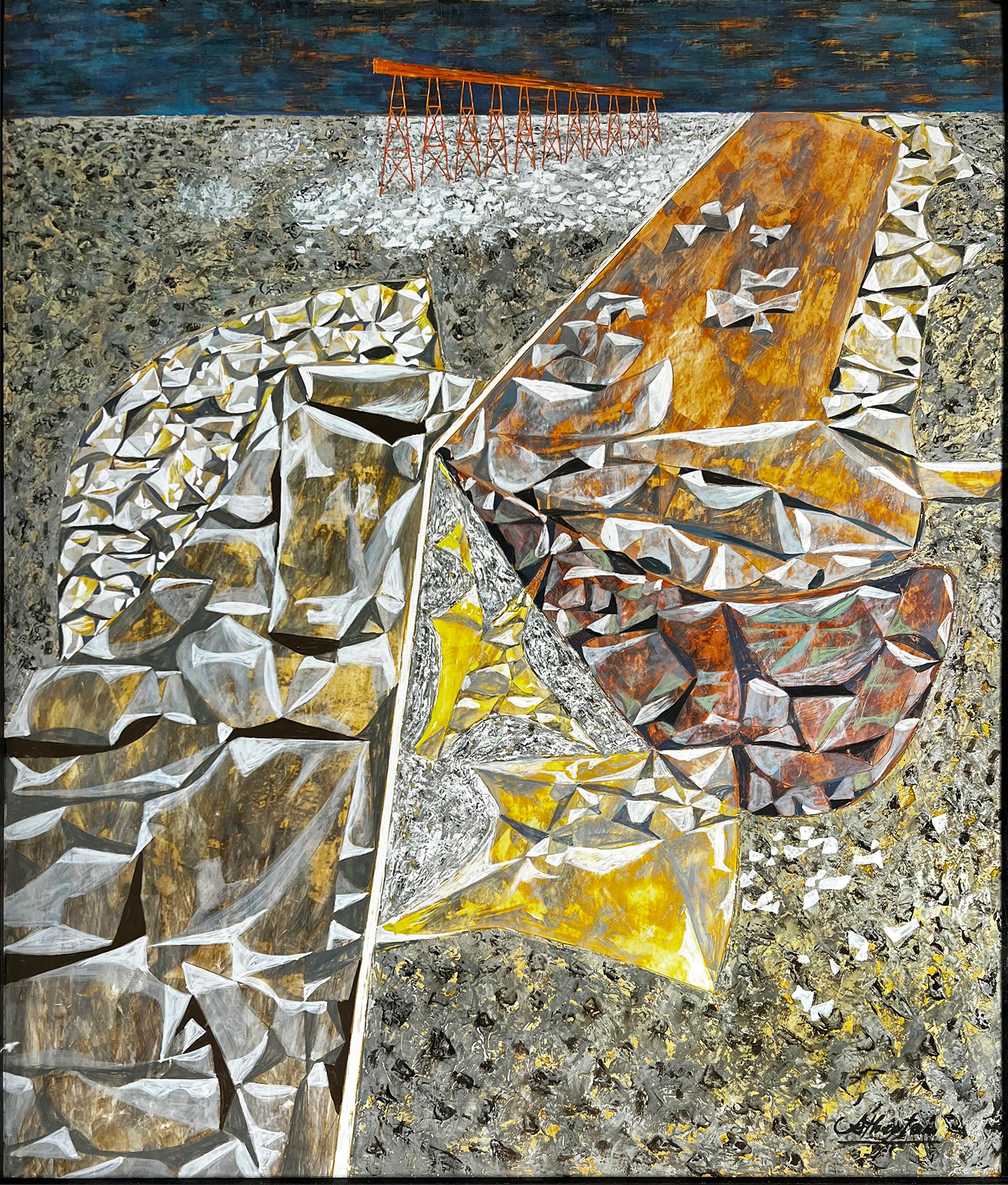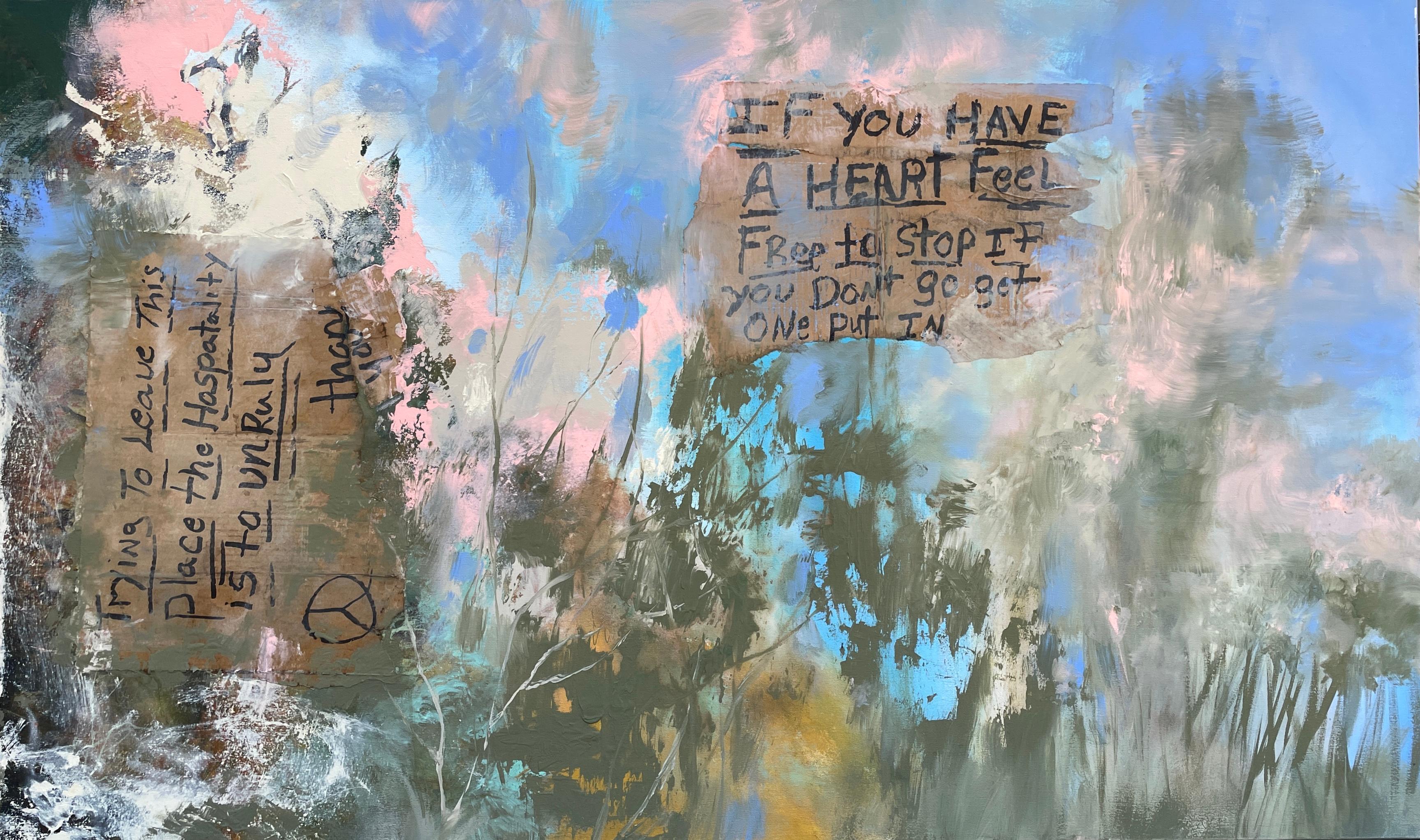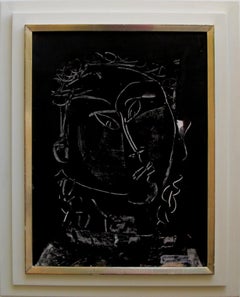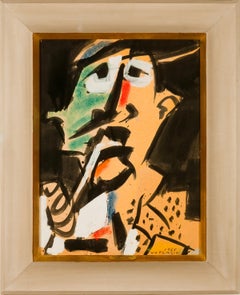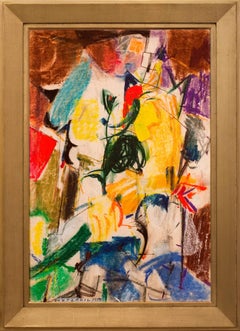
"First Kiss"
View Similar Items
Vaclav Vytlacil"First Kiss"1958
1958
About the Item
- Creator:Vaclav Vytlacil (1892-1984, American)
- Creation Year:1958
- Dimensions:Height: 36 in (91.44 cm)Width: 24 in (60.96 cm)
- Medium:
- Movement & Style:
- Period:
- Condition:
- Gallery Location:Lambertville, NJ
- Reference Number:Seller: NJOL531stDibs: LU374620022
Vaclav Vytlacil
Born in 1892, Vaclav Vytlacil was a highly educated and gifted artist, early at the School of the Art Institute of Chicago, and later at the Art Students League. In the 1920s, his travels to Europe and studies of the old masters helped him gain artistic perspective and knowledge. At the Royal Academy of Art in Munich, Vytlacil met and befriended Hans Hofmann, becoming his teaching assistant. After returning to the US in 1928, Vytlacil became a member of the Art Students League faculty and successfully persuaded Hofmann to teach at the League as well. In 1936, he became a co-founder of the American Abstract Artists group and taught at Queens College in New York; the College of Arts and Crafts in Oakland, California; Black Mountain College in North Carolina; and the Art Students League. Vytlacil was honored with solo shows at The Carnegie Institute, Montclair Art Museum, the Phillips Memorial Gallery, the Krasner Gallery, University of Notre Dame, Rochester Art Gallery and others.
- “Woman in Black”By Vaclav VytlacilLocated in Lambertville, NJJim’s of Lambertville is proud to offer this artwork by: Vaclav Vytlacil (1892-1984) He was born to Czechoslovakian parents in 1892 in New York City. Living in Chicago as a youth, he took classes at the School of the Art Institute of Chicago, returning to New York when he was 20. From 1913 to 1916, he enjoyed a scholarship from the Art Students League, and worked with John C. Johansen (a portraitist whose expressive style resembled that of John Singer Sargent), and Anders Zorn. He accepted a teaching position at the Minneapolis School of Art in 1916, remaining there until 1921. This enabled him to travel to Europe to study Cézanne’s paintings and works of the Old Masters. He traveled to Paris, Prague, Dresden, Berlin, and Munich seeking the works of Titian, Cranach, Rembrandt, Veronese, and Holbein, which gave him new perspective. Vytlacil studied at the Royal Academy of Art in Munich, settling there in 1921. Fellow students were Ernest Thurn and Worth Ryder, who introduced him to famous abstractionist Hans Hofmann. He worked with Hofmann from about 1922 to 1926, as a student and teaching assistant. During the summer of 1928, after returning to the United States, Vytlacil gave lectures at the University of California, Berkeley, on modern European art. Soon thereafter, he became a member of the Art Students League faculty. After one year, he returned to Europe and successfully persuaded Hofmann to teach at the League as well. He spent about six years in Europe, studying the works of Matisse, Picasso, and Dufy. In 1935, he returned to New York and became a co-founder of the American Abstract Artists group in 1936. He later had teaching posts at Queens College in New York; the College of Arts and Crafts in Oakland, California; Black Mountain College in North Carolina; and the Art Students League. His paintings exhibit a clear inclination toward modernism. His still lives and interiors from the 1920s indicate an understanding of the art of Cézanne. In the 1930s, his works displayed two very different kinds of art at the same time. His cityscapes and landscapes combine Cubist-inspired spatial concerns with an expressionistic approach to line and color. Vytlacil also used old wood, metal, cork, and string in constructions, influenced by his friend and former student, Rupert Turnbull. He eventually ceased creating constructions as he considered them too limiting. The spatial challenges of painting were still his preference. During the 1940s and 1950s, his works indicated a sense of spontaneity not felt in his earlier work. He married Elizabeth Foster in Florence, Italy, in 1927 and they lived and worked in Positano, Italy for extended periods of time. Later on, they divided their time between homes in Sparkill, New York and Chilmark, Massachusetts, where Vyt, as he was affectionately called, taught at the Martha's Vineyard Art...Category
1960s Abstract Expressionist Figurative Paintings
MaterialsOil, Board
- "Still Life with Bananas"By Vaclav VytlacilLocated in Lambertville, NJJim’s of Lambertville is proud to offer this artwork by: Vaclav Vytlacil (1892-1984) He was born to Czechoslovakian parents in 1892 in New York City. Living in Chicago as a youth, he took classes at the School of the Art Institute of Chicago, returning to New York when he was 20. From 1913 to 1916, he enjoyed a scholarship from the Art Students League, and worked with John C. Johansen (a portraitist whose expressive style resembled that of John Singer Sargent), and Anders Zorn. He accepted a teaching position at the Minneapolis School of Art in 1916, remaining there until 1921. This enabled him to travel to Europe to study Cézanne’s paintings and works of the Old Masters. He traveled to Paris, Prague, Dresden, Berlin, and Munich seeking the works of Titian, Cranach, Rembrandt, Veronese, and Holbein, which gave him new perspective. Vytlacil studied at the Royal Academy of Art in Munich, settling there in 1921. Fellow students were Ernest Thurn and Worth Ryder, who introduced him to famous abstractionist Hans Hofmann. He worked with Hofmann from about 1922 to 1926, as a student and teaching assistant. During the summer of 1928, after returning to the United States, Vytlacil gave lectures at the University of California, Berkeley, on modern European art. Soon thereafter, he became a member of the Art Students League faculty. After one year, he returned to Europe and successfully persuaded Hofmann to teach at the League as well. He spent about six years in Europe, studying the works of Matisse, Picasso, and Dufy. In 1935, he returned to New York and became a co-founder of the American Abstract Artists group in 1936. He later had teaching posts at Queens College in New York; the College of Arts and Crafts in Oakland, California; Black Mountain College in North Carolina; and the Art Students League. His paintings exhibit a clear inclination toward modernism. His still lives and interiors from the 1920s indicate an understanding of the art of Cézanne. In the 1930s, his works displayed two very different kinds of art at the same time. His cityscapes and landscapes combine Cubist-inspired spatial concerns with an expressionistic approach to line and color. Vytlacil also used old wood, metal, cork, and string in constructions, influenced by his friend and former student, Rupert Turnbull. He eventually ceased creating constructions as he considered them too limiting. The spatial challenges of painting were still his preference. During the 1940s and 1950s, his works indicated a sense of spontaneity not felt in his earlier work. He married Elizabeth Foster in Florence, Italy, in 1927 and they lived and worked in Positano, Italy for extended periods of time. Later on, they divided their time between homes in Sparkill, New York and Chilmark, Massachusetts, where Vyt, as he was affectionately called, taught at the Martha's Vineyard Art...Category
1930s Abstract Expressionist Abstract Paintings
MaterialsOil, Board
- "After Work"By Vaclav VytlacilLocated in Lambertville, NJJim’s of Lambertville is proud to offer this artwork. Signed lower right Vaclav Vytlacil (1892-1984) He was born to Czechoslovakian parents in 1892 in New York City. Living in C...Category
20th Century Abstract Expressionist Abstract Paintings
MaterialsOil, Board
- "Blue Fish"By Vaclav VytlacilLocated in Lambertville, NJJim’s of Lambertville is proud to offer this artwork by: Vaclav Vytlacil (1892-1984) He was born to Czechoslovakian parents in 1892 in New York City. Living in Chicago as a youth, he took classes at the School of the Art Institute of Chicago, returning to New York when he was 20. From 1913 to 1916, he enjoyed a scholarship from the Art Students League, and worked with John C. Johansen (a portraitist whose expressive style resembled that of John Singer Sargent), and Anders Zorn. He accepted a teaching position at the Minneapolis School of Art in 1916, remaining there until 1921. This enabled him to travel to Europe to study Cézanne’s paintings and works of the Old Masters. He traveled to Paris, Prague, Dresden, Berlin, and Munich seeking the works of Titian, Cranach, Rembrandt, Veronese, and Holbein, which gave him new perspective. Vytlacil studied at the Royal Academy of Art in Munich, settling there in 1921. Fellow students were Ernest Thurn and Worth Ryder, who introduced him to famous abstractionist Hans Hofmann. He worked with Hofmann from about 1922 to 1926, as a student and teaching assistant. During the summer of 1928, after returning to the United States, Vytlacil gave lectures at the University of California, Berkeley, on modern European art. Soon thereafter, he became a member of the Art Students League faculty. After one year, he returned to Europe and successfully persuaded Hofmann to teach at the League as well. He spent about six years in Europe, studying the works of Matisse, Picasso, and Dufy. In 1935, he returned to New York and became a co-founder of the American Abstract Artists group in 1936. He later had teaching posts at Queens College in New York; the College of Arts and Crafts in Oakland, California; Black Mountain College in North Carolina; and the Art Students League. His paintings exhibit a clear inclination toward modernism. His still lives and interiors from the 1920s indicate an understanding of the art of Cézanne. In the 1930s, his works displayed two very different kinds of art at the same time. His cityscapes and landscapes combine Cubist-inspired spatial concerns with an expressionistic approach to line and color. Vytlacil also used old wood, metal, cork, and string in constructions, influenced by his friend and former student, Rupert Turnbull. He eventually ceased creating constructions as he considered them too limiting. The spatial challenges of painting were still his preference. During the 1940s and 1950s, his works indicated a sense of spontaneity not felt in his earlier work. He married Elizabeth Foster in Florence, Italy, in 1927 and they lived and worked in Positano, Italy for extended periods of time. Later on, they divided their time between homes in Sparkill, New York and Chilmark, Massachusetts, where Vyt, as he was affectionately called, taught at the Martha's Vineyard Art...Category
1960s Abstract Expressionist Abstract Paintings
MaterialsOil, Board
- "Rough Seas"By Vaclav VytlacilLocated in Lambertville, NJSigned and dated 1958 lower right. Vaclav Vytlacil (1892-1984) He was born to Czechoslovakian parents in 1892 in New York City. Living in Chicago as a youth, he took classes at the School of the Art Institute of Chicago, returning to New York when he was 20. From 1913 to 1916, he enjoyed a scholarship from the Art Students League, and worked with John C. Johansen (a portraitist whose expressive style resembled that of John Singer Sargent), and Anders Zorn. He accepted a teaching position at the Minneapolis School of Art in 1916, remaining there until 1921. This enabled him to travel to Europe to study Cézanne’s paintings and works of the Old Masters. He traveled to Paris, Prague, Dresden, Berlin, and Munich seeking the works of Titian, Cranach, Rembrandt, Veronese, and Holbein, which gave him new perspective. Vytlacil studied at the Royal Academy of Art in Munich, settling there in 1921. Fellow students were Ernest Thurn and Worth Ryder, who introduced him to famous abstractionist Hans Hofmann. He worked with Hofmann from about 1922 to 1926, as a student and teaching assistant. During the summer of 1928, after returning to the United States, Vytlacil gave lectures at the University of California, Berkeley, on modern European art. Soon thereafter, he became a member of the Art Students League faculty. After one year, he returned to Europe and successfully persuaded Hofmann to teach at the League as well. He spent about six years in Europe, studying the works of Matisse, Picasso, and Dufy. In 1935, he returned to New York and became a co-founder of the American Abstract Artists group in 1936. He later had teaching posts at Queens College in New York; the College of Arts and Crafts in Oakland, California; Black Mountain College in North Carolina; and the Art Students League. His paintings exhibit a clear inclination toward modernism. His still lives and interiors from the 1920s indicate an understanding of the art of Cézanne. In the 1930s, his works displayed two very different kinds of art at the same time. His cityscapes and landscapes combine Cubist-inspired spatial concerns with an expressionistic approach to line and color. Vytlacil also used old wood, metal, cork, and string in constructions, influenced by his friend and former student, Rupert Turnbull. He eventually ceased creating constructions as he considered them too limiting. The spatial challenges of painting were still his preference. During the 1940s and 1950s, his works indicated a sense of spontaneity not felt in his earlier work. He married Elizabeth Foster in Florence, Italy, in 1927 and they lived and worked in Positano, Italy for extended periods of time. Later on, they divided their time between homes in Sparkill, New York and Chilmark, Massachusetts, where Vyt, as he was affectionately called, taught at the Martha's Vineyard Art...Category
1950s Abstract Expressionist Abstract Paintings
MaterialsMixed Media, Board
- "Manhattan Night Life"By Vaclav VytlacilLocated in Lambertville, NJJim’s of Lambertville is proud to offer this artwork by: Vaclav Vytlacil (1892-1984) He was born to Czechoslovakian parents in 1892 in New York City. Living in Chicago as a youth, he took classes at the School of the Art Institute of Chicago, returning to New York when he was 20. From 1913 to 1916, he enjoyed a scholarship from the Art Students League, and worked with John C. Johansen (a portraitist whose expressive style resembled that of John Singer Sargent), and Anders Zorn. He accepted a teaching position at the Minneapolis School of Art in 1916, remaining there until 1921. This enabled him to travel to Europe to study Cézanne’s paintings and works of the Old Masters. He traveled to Paris, Prague, Dresden, Berlin, and Munich seeking the works of Titian, Cranach, Rembrandt, Veronese, and Holbein, which gave him new perspective. Vytlacil studied at the Royal Academy of Art in Munich, settling there in 1921. Fellow students were Ernest Thurn and Worth Ryder, who introduced him to famous abstractionist Hans Hofmann. He worked with Hofmann from about 1922 to 1926, as a student and teaching assistant. During the summer of 1928, after returning to the United States, Vytlacil gave lectures at the University of California, Berkeley, on modern European art. Soon thereafter, he became a member of the Art Students League faculty. After one year, he returned to Europe and successfully persuaded Hofmann to teach at the League as well. He spent about six years in Europe, studying the works of Matisse, Picasso, and Dufy. In 1935, he returned to New York and became a co-founder of the American Abstract Artists group in 1936. He later had teaching posts at Queens College in New York; the College of Arts and Crafts in Oakland, California; Black Mountain College in North Carolina; and the Art Students League. His paintings exhibit a clear inclination toward modernism. His still lives and interiors from the 1920s indicate an understanding of the art of Cézanne. In the 1930s, his works displayed two very different kinds of art at the same time. His cityscapes and landscapes combine Cubist-inspired spatial concerns with an expressionistic approach to line and color. Vytlacil also used old wood, metal, cork, and string in constructions, influenced by his friend and former student, Rupert Turnbull. He eventually ceased creating constructions as he considered them too limiting. The spatial challenges of painting were still his preference. During the 1940s and 1950s, his works indicated a sense of spontaneity not felt in his earlier work. He married Elizabeth Foster in Florence, Italy, in 1927 and they lived and worked in Positano, Italy for extended periods of time. Later on, they divided their time between homes in Sparkill, New York and Chilmark, Massachusetts, where Vyt, as he was affectionately called, taught at the Martha's Vineyard Art...Category
1930s Abstract Expressionist Abstract Paintings
MaterialsCanvas, Oil
- Le Comte "The Count"Located in West Hollywood, CALe Comte “The Count” - This artwork depicts the 19th century poet, Lucien Ducasse, also known as Comte de Lautremont. After being enthralled by the literary work “Le chants de Maldoror” in one night, the artist dreamt of the poets face and was compelled to bring it to life on canvas. The portrait has a classic setting as “Mezzo Busto”, or half bust, and exudes timeless sophistication through the bold use of color and dense oils, creating a three-dimensional effect and giving immense life to the character. ABOUT THE ARTIST - Massimo Damico...Category
2010s Abstract Expressionist Portrait Paintings
MaterialsMixed Media, Oil, Acrylic, Board
- Layered Light, Lee Herring, Landscape Art, Original Floral Art, Contemporary ArtBy Lee HerringLocated in Deddington, GBLee Herring Layered Light Original Painting Mixed Media on Board with a Varnish Glaze Framed Size: H 115cm x W 115cm x D 4cm Sold Framed in a White Frame Please note that in situs ar...Category
21st Century and Contemporary Abstract Expressionist Landscape Paintings
MaterialsMixed Media, Oil, Spray Paint, Board
- Railway Arches & Bridges Abstract Expressionist Art by Modern British PainterBy Angela WakefieldLocated in Preston, GBAbstract Expressionist Painting inspired by the Railway Arches & Bridges of the Industrial North of England by Contemporary British Artist, Angela Wakefield. This original is a rare,...Category
1990s Abstract Expressionist Abstract Paintings
MaterialsBoard, Wood, Gesso, Acrylic, Oil, Mixed Media, Varnish, Paint
- 'Purple Noon' Contemporary Abstract Landscape Oil on Board By Katheryn HoltLocated in Carmel, CAThis intricate artwork unfolds as a multi-dimensional tapestry, where each layer contributes to a narrative that resonates with the soul. At the uppermost layer, a delicate dance of...Category
21st Century and Contemporary Abstract Expressionist Landscape Paintings
MaterialsMixed Media, Oil, Board
$4,720 Sale Price20% Off - "Untitled, " Female Abstract Expressionism, Jean Cohen, Alex KatzBy Jean CohenLocated in New York, NYJean Cohen Untitled, circa 1960 Signed Lower Right: Jean Cohen Mixed Media on artist board 26 3/4 x 19 inches Jean Cohen was an important American painter whose work spans six decades. Jean Cohen lived on Tenth Street in Manhattan, and was a member of the vibrant Tenth Street Artists Galleries during the 1950s and 1960s. She was married to Alex Katz, was a member of the Area Gallery, and showed her work in the Tanager Gallery as well. She has paintings in the permanent collection of the Metropolitan Museum of Art, the New Jersey State Museum, Museum of Modern Art, the University of Maine, and the Whitney Museum of American Art. She has yet to be given the recognition she deserves. Born 1927 Washington Heights, New York Married to painter Alex Katz 1949-1956 Tanager Gallery NYC 1952-1962 Involved with painter John Grillo 1957-1962 Area Gallery NYC 1960-'65 Split time living between NYC and Provincetown c.1957-1980 Landmark Gallery, NYC 1972-1977 Co Founder in '72. Moved to Long Island '85 Died on Long Island, New York 2013 Education: Cooper Union 1945-1948. Studied with John Ferren, Nicholas Marsicano, Morris Kantor, Leo Manso...Category
1960s Abstract Expressionist Abstract Paintings
MaterialsMixed Media, Oil, Gouache, Board
- "Midsummer Night" Gerome Kamrowski, Color Field, Abstract ExpressionismBy Gerome KamrowskiLocated in New York, NYGerome Kamrowski Midsummer Night, 1973 Signed upper left Acrylic on canvas 16 x 20 inches Gerome Kamrowski was born in Warren, Minnesota, on January 19, 1914. In 1932 he enrolled in...Category
1970s Abstract Expressionist Abstract Paintings
MaterialsFoam, Mixed Media, Acrylic, Board
